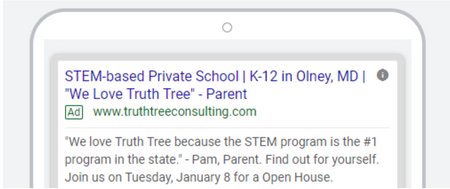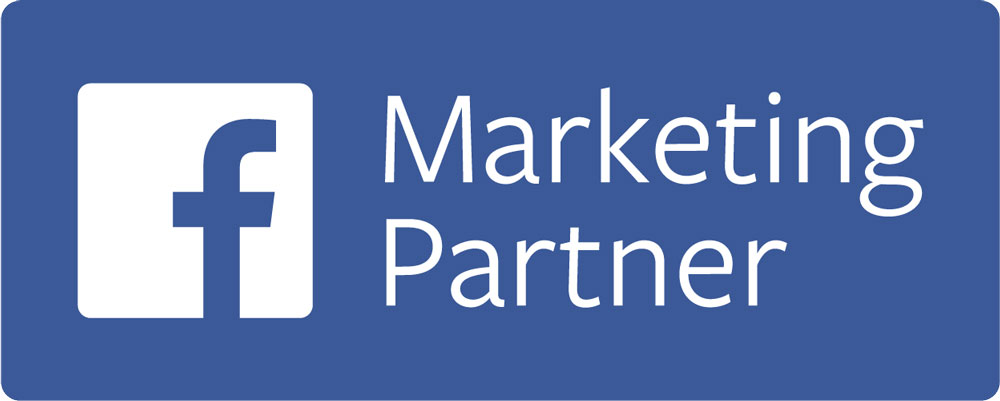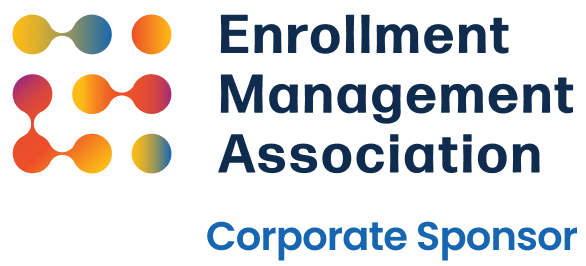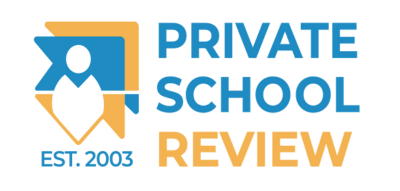by Trevor Waddington, Founder & President, Truth Tree
It’s no secret that Google Ads for school marketing is the single most important digital marketing tool on the planet. Google ad management for private schools is more important than ever, as your first impression is one of the most important moments in the dynamic between yourself and your potential parents.
Why?
Because no matter what, when someone searches “private schools in the Chicago area,” there is a 92.42% chance that person is searching on Google. And you are not going to be the first thing that person sees unless you pay to play. Google ads for schools can bring incredible returns on your investment, but only if they’re implemented correctly.
With dozens of years under our belt at Truth Tree, we’ve spent countless hours creating and analyzing Google Ads for charter, independent and private schools. We’ve seen some amazing Google search ads schools publish. Other times, we see Google ads for schools that are ineffective money pits. In education marketing, the difference between great Google ads for schools and mediocre Google ads for schools comes down to details, and we’ve covered these most important details below.
Here are the 3 biggest mistakes we see independent schools make with their Google Ads. If you want to improve your abilities and understanding of Google ad management for schools, start here, and see if you’ve been the victim of any of these common mistakes.
The Three Biggest Mistakes in Google Ads for Schools
1. Leading with the school name – Unless you are the top school in your market, the name of your school is not going to mean much to a prospective parent. If they are searching for an independent school, there’s a reason. If you can address that reason in 30 characters or less (the length of a headline), you are going to find success with your Google Ads. Google ad management for private schools is about concisely summarizing why your school is exactly what the parent is looking for.
In the example below, you can see I don’t even use the full name of the school in the ad. And that’s okay. It’s not about your name. It’s about what you can do for their child(ren) and family.

2. Keywording your school name – Google uses keywords to identify the best pages to display and in what order to show them. Unless the name of your school is Amazon Academy or Disney World Prep, there’s no need to use your school name in your keywords. In some industries, like eCommerce, it’s commonplace to the point of necessity. Because of this, the “bigtime” PPC firms follow their script and keyword the name of their customer.
Here’s the deal, if someone is searching for your exact school name chances are they are looking for….wait for it… your school. In all likelihood, it’s a current parent looking to access the parent portal or check the calendar to see when the next soccer game will be. So naturally, they click on the first thing that has your name.
So unless your competitors are trying to capture some of your glory and their ad is showing above your organic snippet when the user types in your exact school name, nix the name in your keyword bank. If they’re searching for your name, you already have their attention, and that ad space is wasted, compared to showing it to someone who’s never heard of you or your competitors and is looking to make a decision. Google ad management for private schools requires you to think about your prospective parents in those terms, in various states of awareness of who you are and what you do.
3. An ad that points to the homepage – What if you were shopping for a 1989 candy apple red Porsche 911 with the G50 transmission. While you know exactly what you want, you go to Google and start a bit broad with your search. #HangWithMeIAmGettingThere

Then bam, the first listing you see describes precisely what you are seeking. You are so excited and click the page snippet.
While you were expecting to see this.

The ad points to this…

…a gorgeous webpage, but nothing about the Porsche and no way to immediately contact the dealership to inquire about the car. You’ve hit a point where many customers, in this case, would simply exit the site and continue their search back on Google. Even though you’re now aware that the dealership may have the car you’re looking for, their misplaced ad has created a situation where you will have to dig through the website to find what you’re looking for. Google ads for schools can fall into a similar situation, preparing the user for a page on a particular topic, then dropping them at the homepage with no instructions on where to go to learn more about their original topic of interest.
Just as important as the ad itself, you need a landing page that continues the story that started with the ad. Google ads for schools should tie into a webpage that continues the story your ad started.
If you talk about your International Baccalaureate program and small class sizes in the ad, the user should end up on a page that speaks about IB and the benefits of such a program in a small class setting. It should also have a contact form above the fold so you can capture the user’s information and start the all-important initial conversation with them. By following the point of your Google ads for schools, a user should reach a page that continues to give information regarding the reason they clicked the ad originally.
In today’s competitive landscape, making a strong first impression is key to capturing the attention of prospective parents, and Google ad management is an effective way to achieve this. So, by avoiding these pitfalls and following our tips, you can optimize your Google ads as a part of your stellar enrollment marketing strategy.











